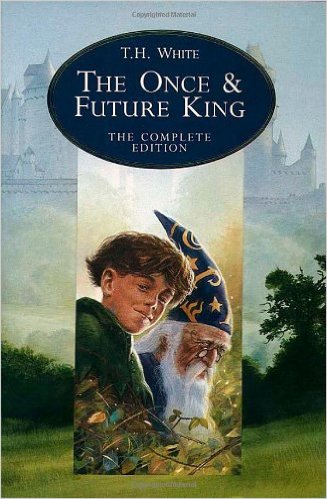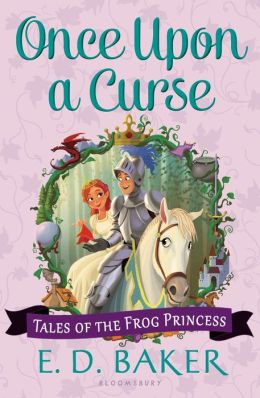[button color=”black” size=”big” link=”http://affiliates.abebooks.com/c/99844/77798/2029?u=http%3A%2F%2Fwww.abebooks.com%2Fservlet%2FSearchResults%3Fisbn%3D9780441627400″ target=”blank” ]Purchase here[/button]
Before Dumbledore, before even Gandalf, the English imagination conceived a great wizard of whom all others are but pale imitations. Merlin’s beard! Who could I mean, but Merlin?
Since Malory’s Morte d’Arthur there have been many retellings of the popular legends of Arthur, the Knights of the Round Table, Launcelot and Guenever, and the quest for the Holy Grail. Lately there have even been a series of books by T. A. Barron about the youthful “lost years” of Merlin himself. But, in my view, the definitive account is T. H. White’s Four-Books-In-One: The Sword in the Stone, The Queen of Air and Darkness, The Ill-Made Knight, and The Candle in the Wind, which together make the comprehensive classic The Once and Future King.
Disney animation fans will recognize the first of the four books-within-a-book as the subject of one of Disney’s animated features, and a decent adaptation it is. But that is only the first part of a great story, like The Hobbit to The Lord of the Rings. In The Sword in the Stone, a boy known as the Wart learns the arts and sciences of being a nobleman, along with his foster-brother Kay, in the forest manor of Kay’s father, Sir Ector. But there is more to being a gentleman than jousting, fencing, and archery. Some of the deeper mysteries are taught them by the village priest; others, by the philosopher Merlin, who is also a wizard and (this is the weird part) who lives backwards in time, so that he knows the future but not the past.
Merlin makes the Wart his special pupil, teaching him lessons about being a man by magically transforming him into different animals. Wart has other magical adventures even apart from Merlin–including a terrifying rescue mission in a fairy castle. But he chafes to become a knight, like Kay ahead of him, whom he comes to serve as squire. During a tourney in London, Kay sends the Wart to fetch his sword, and being unable to get to it, the Wart instead pulls a sword out of a stone…only this sword is Excalibur, which no one but the born king of Britain can remove from the stone!
So much for the lighter part of the story. By the time you have read this far, you will have fallen in love with the Wart, I mean Arthur, who is simply a wonderful kid, and who has high hopes of being a really great king. But it is not to be. For in subduing the warlords and thugs who pass for ruling authority in England, he makes one set of enemies; and in being the son of Uther Pendragon by means of deception, rape, and murder, he has another set of enemies–some of them men, some of them magical. And then the betrayal of Guenever and Launcelot, and the seduction of Arthur by his own half-sister, put the finishing touches on the tragedy. What began in great promise, ended in sorrow and disappointment because of the unforgiving rivalries of men and the clash between good and evil, between Celtic magic and Norman religion.
The sweet idyll of The Sword in the Stone, with its positive ending, makes a good magical-adventure story for the young at heart all by itself. You may be a happier person if you stop there. But you will be a wiser and more honest person if you read the book to the end, by which the memory of all that was so good in the story of young Wart will bring you to tears of grief and remorse. And that kind of tears–tears brought on by understanding the truth–stamp this as a truly great story.


